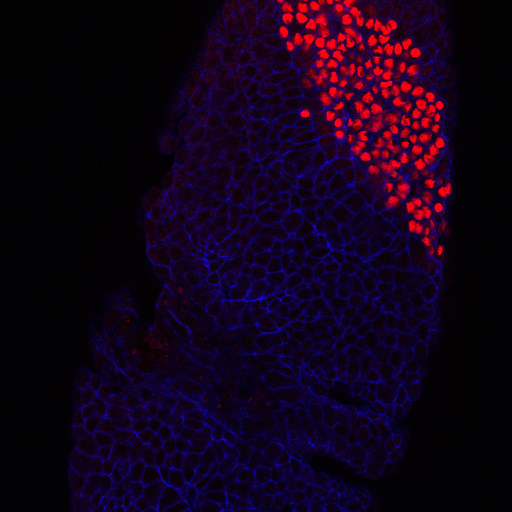Nathan Harris alumni page

Background & Contact Information
Graduate Student, Department of Biology (2005 – 2013)
Postdoc: Gant Luxton lab, University of Minnesota
Currently: Clinical Technologist, MedTox Laboratories
Education: BS, University of California at Davis
Fellowships & Awards: Cancer Cell Biology Training Program.
Email: njharris@live.unc.edu
DOWNLOAD CV

Research Information
Animal development is dependent on proper cell-cell interactions, which are mediated in part by adherens junctions (AJ). The core of these junctions, cadherins and catenins, interact with one another to connect cells together as well as with cortical actin cytoskeleton. As a result of these interactions, cells can form an actin belt within a cell that be manipulated to generate the wide variety of cell shape changes required for proper embryogenesis. However, there are other proteins localized to AJs that are not part of this known core whose functions are still to be determined. It is thought that these other components could be functionally redundantly or provide functions that are important for the regulation and maintenance of AJs.
Studies on some of these novel proteins, specifically canoe (cno), the Drosophila homolog of mammalian Afadin/AF-6, has shed light on other proteins that may co-localize and function at AJs to properly regulate cell shape changes during embryogenesis. One of these proteins found to interact physically and genetically with cno is the small GTPase Rap1. Mammalian Rap1 has been recently proposed to regulate integrin adhesion, while Drosophila Rap1 is suggested to regulate cadherin localization in imaginal discs. Rap1 has functions in early morphogenesis, but how it functions with cno to regulate adhesion or other intercellular events is not well understood. Currently, I’m investigating Rap1’s role in cell-cell adhesion by analyzing maternal/zygotic mutants, and looking for possible genetic interactions with other proteins that localize to the AJ or are predicted to bind Rap1 based on work in other organisms. In addition, we are examining Rap1 in wild-type embryos to learn more about its localization inside the cell during embryo morphogenesis.
Publications
- Choi, W.*, Harris, N. J.*, Sumigray, K.D., and Peifer, M. (2013). Rap1 and Canoe/afadin are essential for establishment of apical-basal polarity in the Drosophila embryo. Molecular Biology of the Cell 24, 945-963. * = co-first authors.
- Ellis, S.J., Goult, B.T.,, Fairchild, M.J.,, Harris, N.J., Long, J., Lobo, P., Czerniecki, S., Van Petegem, F., Schöck, F., Peifer,M., Tanentzapf, G. (2013) Talin autoinhibition is required for morphogenesis. Current Biology, in press.
- Sawyer, J.K., Choi, W. , Jung, K.-C., Hi, L., Harris, N.J., and Peifer, M., (2011). A contractile actomyosin network linked to adherens junctions by Canoe/afadin helps drive convergent extension. Molecular Biology of the Cell 22: 2491-2508 .
- Sawyer, J.K, Harris, N. J, and Peifer, M. (2009) Morphogenesis: Multitalented GTPases seeking new jobs. Current Biology 19, R985-R987.
- Sawyer, J.K., Harris, N.J., Slep, K.C., Gaul, U., and Peifer, M. (2009) The Drosophila afadin homolog Canoe regulates linkage of the actin cytoskeleton to adherens junctions during apical constriction. Journal of Cell Biology 186:57-73 .
- Laurencon A, Orme CM, Peters HK, Boulton CL, Vladar EK, Langley SA, Bakis EP, Harris DT, Harris NJ, Wayson SM, Hawley RS, Burtis KC. (2004). A large-scale screen for mutagen-sensitive loci in Drosophila. Genetics. 167:217-31.


